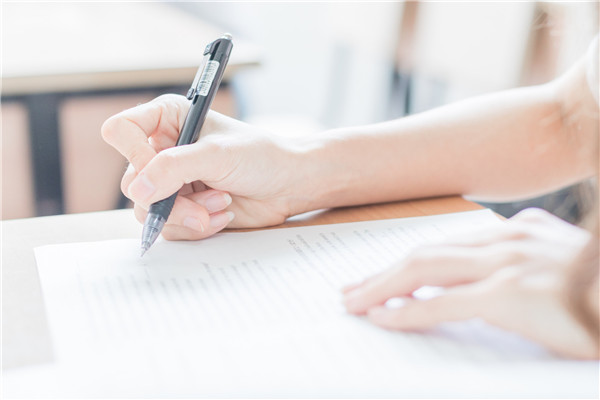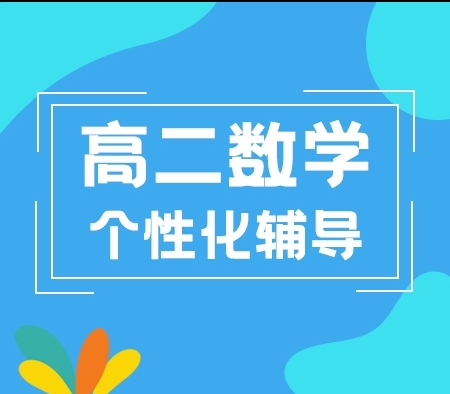西安初一学生:这里有全套的初一英语下册考试点(下篇),快快拿走
上一篇,小编给大家搜集罗列了全套的初一下册考试精髓,不知道看过的小伙伴有多少收收获呢?在这里,小编想说,学习英语不是一蹴而就的事情,需要持之以恒,一步一个脚印。因此,小编建议各位同学,多上网查查英语收藏的句型、短语、词汇等,平时多看看、多读读、多背背,在考场上是会帮助到你的哟。

第六单元
1. don't run in the hallways.不准在走廊里跑。(第31页)
解析1)Don't +动词原形是祈使句的否定形式,意为“不要...;禁止....”,相当于“you mustn't +动词原形”。Don't be late for class next time。
2)祈使句的用法:用来表达命令、要求、请求、劝告的句子。其肯定形式以动词原形开头。常在句首或句末加please以示礼貌。句末用please,前面通常加逗号。
2. Don't arrive late for classs.(第31页)不准上课迟到。
解析:1)arrive late for 与be late for 同义。都表示“做事迟到”。arrive late for侧重到达的时间晚,be late for 侧重状态。
2)arrive 作不及物动词,“到达;抵达”,后跟介词in或at ,in后接大地方,at 后接小地方。Arrive后若是接地点副词,则不需要介词。
We were tired when we arrived /reached/got home.我们到家时很累了。
3.Don't run in the hallway.(第31页)不要在走廊里奔跑。
解析:这是一个祈使句。祈使句用来表示请求、命令、劝告、建议等。祈使句的主语一般都是第二人称you,但往往省略。其肯定形式用动词原形开头,否定句式是在动词原形前加don't 。常在句首或句末加please以示礼貌,句末用please时,前面通常加逗号。
Stop talking.come in,please.Don't play football in the street.
2)祈使句用法助记
祈使句,祈使句,请求、命令或建议。
主语是you常省去,动词原形开头记。
否定形式要注意,句首要把't 加,
要将客气用please,句首、句末没关系。
4.Don't listen to music in class.(第31页)
解析:1)listen to music,“听音乐”,其中,listen是不及物动词,后面接宾语时,要加介词to。 Listen!The girl is singing .Listen to the teacher carefully.
2)listen ;hear
Listen,不及物动词,后面接宾语时,要加介词to。侧重于“听”的动作。表示有意识的听。
This girl likes to listen to the radio.
Hear,及物动词,强调“听”的结果。听到;听见
Can you hear anything?你能听到什么吗?
3)in class ,固定短语,“在课上;上课时”,after class,“在课下;下课后”。
5.Don't fight.(第31页)
解析:fight动词,“打架”。Stop fighting ,you two.
1)fight for,为...而战斗,后面常接抽象名词,表示为事业。自由等而斗争。表示战斗的目的。They are fighting for freedom.
They fight for their country.
2)fight about,为。。。而争吵,后接名词、动词、或宾语从句,表示吵架的原因。
The two boys often fight about the toys.
这两个男孩经常因玩具而争吵。
3)fight against,对抗...;为反对。。。而斗争;后接事物名词、人和。表示在困难中抵抗。 They fought against the enemy.他们和敌人作战。
I 'll fight against you. 我会反抗你。
4)fight with,“与。。。共同作战,用某种武器与某人交战(相当于fight against);和...打架”。只接表示人或的名词。
Don't fight with me.不要和他打架。
We must fight with you.我们需要和你一起并肩作战。

6.wear a hat.(第32页)戴帽子。
解析:1)wear为及物动词,“穿;戴”,强调穿、戴的状态.指习惯性的“穿(戴)假发或眼镜等” He always wears a red T-shirt.
She likes wearing sunglasses.
2)put on,“穿上,戴上”,强调穿的动作。
It 's cold outside.Put on your coat ,please.
3)be in +颜色/衣服,“穿着....颜色的衣服”,表状态。
She is in red.
4)wear,“穿(戴)着”,强调状态。
Lucy's mother often wears a pair of glasses.
7.This is very important.(第32页)。
解析:1)important,形容词,“重要的”,多用作be动词的后面,前面也常加very,表示“重要”。其名词形式是importance。
They are very important.
2)常用句型为:it is important for sb.to do sth.“做某事对某人来说是重要的”。
It is important for us to learn English well.
8.Can we bring music players to school?(第32页)我们可以把音乐播放器带到学校吗?
解析1)本句为含有情态动词can的一般疑问句,肯定回答用:Yes,...can.否定回答用:No ,...can't.这是请求许可的句型。用来请求别人允许自己做某事。用于疑问句。
Can we use youe car?
2)can还可表示“能力”。“能;会”
We can speak a little English.
3)辨析;bring;take;get;carry
Bring “带来;拿来”,指从别处带到说话者所在的地方。
Take,“带走;拿走”,指从说话者所在的地方带到远处去,常与介词to 连用,方向上与bring正好相反。His father often takes him to the zoo on weekends.
Get “得到;获得”无方向性,常与介词from连用。People often get money from me.
Carry“搬运”,无方向性.
The box is too heavy for the boy to carry.
9.Oh,and we also have to be quiet in the library.(第32页)
解析:1)quiet,形容词,安静的,平静的,通常在句中作表语或定语,其反义词是niosy,“吵闹的;嘈杂的”。其副词形式是quietly。
don't be niosy.You must be quiet.
2)have to 需要;不得不。强调客观情况,有人称和时态的变化,后只能接动词原形。其否定形式是don't/doesn’t have to,“不必”。
Do you have to leave so early?你需要这么早离开吗?
You don't have to go there with me.
3)辨析must 和have to
must,着重于说话者的主观看法,认为有义务、有需要去做某事,have to,表示客观的,被迫去做某事。 I must write her a letter next week.
The train was late; we have to wait for another two hours.
Must 没有人称和时态的变化,而且可以直接加上not变否定句;也可以提到主语之前,变成一般疑问句;而have to 变否定句及一般疑问句都要借助于适当的助动词do,does did,等。
You must not smoke in the classroom.
You don't have to worry about her study.
10.pracitce the guitar.(第34)
解析1)practice此处用作及物动词,“练习;训练”,其后可接名词、代词、或动名词作宾语,不能接不定式。
I often practice my English in the morning.
He practices playing the piano every day.
I practice reading English every day.
2)只能接动名词作宾语的动词有:finish(完成),enjoy(喜欢)等。
I finished reading the novel.
I enjoyed working in China.
11help his mom make breakfast.(第34页)
解析:1)help作动词,“帮助”,help sb,(to)do sth.帮助某人做某事。不定式符号to可省略。相当于help sb. with sth.(名词)。
I can't help you lift the stone.= I can't help you with the stone.我不能帮你搬这块石头。
12. on school night.(第34页)在上学期间的晚上
解析:1)night,名词“晚上”,与之相对应的名词day指“白天”,常用短语:on school nights.在上学期间的晚上;on school days,在上学的日子。
2)night前若有其他词修饰,指具体的某个晚上,应用介词on,如on winter nights,在冬天的晚上on Sunday nights,在星期天的晚上
如果泛指晚上,则用介词at.如 at night,在晚上.
3)辨析night与evening
Night,晚上;夜里,指天完全黑下来一直到第二天天亮这段时间,尤指睡觉以后的夜晚,at night“在夜里” Evening,傍晚,晚上,指从晚餐到就寝这段时间,in the evening,“在晚上”。
13. there are too many rules.(第35页)有太多的规则。
解析:1)这是一个there be 句型的肯定句,其后省略了 at my house。There be+某人或某物+某地,表示“某地有某人或某物”。
2)too many ,太多,其中too用作程度副词,表示“太”,修饰形容词many,many 后只能接可数名词的复数形式。
There are too mant students in our school.
3)辨析:too many和too much,much too
too many太多的,其后要接可数名词的复数形式。
too much,太多的,后接不可数名词,还可修饰动词作状语。
He talks too much.
There are too much water in my glass.
I have too much homework this evening.
much too ,太。。。,much 用来增强语气,后面接形容词或副词。
This little boy is much too fat.这个小男孩太胖了。
助记:too much ,much too,去掉前词看后头;much可接不可数,有时也用作副;too 则修饰形或副。too many请记住,其后名词必复数。
14. relax,relaxing,relaxed
Relax,动词,表示放松;使放松。
Playing games always relaxes me.玩游戏总是使我放松。
Relaxing 形容词,主要用来修饰物,表示“令人放松的”,
The film is very relaxing.这部电影很令人放松。
Relaxed,形容词主要用来修饰人,
15. I must read a book before I can watch TV.(第35页)
解析:1)read此处用作及物动词,“读;阅读”。
I usually read storybooks after dinner.
2)read 还可作不及物动词,“阅读;朗读;读书”。
Listen!He is reanding.
3)辨析read,look,see与watch
Read,通常指读书、看信、看报纸、看杂志等。用大脑去思考,含有阅读之意。
Look,指有目的地“看”,强调看的动作,是不及物动词,接宾语时用介词at,即look at。
See 指“看到;看见”,强调看的结果,是及物动词。“看医生”“看电影”常用这个词。
Watch,“细看,注视”,指仔细地、有目的地、全神贯注地“看”。用来指注视移动着的物体,强调看的一个过程,有欣赏的意味,通常用于看电视、体育活动或比赛等。
16. .I know how you feel.(第35页)
解析:1)本句为含有宾语从句的主从复合句。How you feel作know的宾语。如果一个完整的句子在复合句中充当宾语,那么这个句子就叫宾语从句。注意宾语从句需要用陈述语序。
He doesn't know where the post office is.
He told me what I should read.
17..parents and schools are sometimes strict,but remember ,they make rules to help us.(第35页) 解析:1)strict,形容词,“严格的;严厉的”,在句中作表语、定语。
She is a strict teacher.
2)常用短语:be strict with sb。对某人要求严格。
My parents are strict with me.
be strict in sth.对某事要求严格。
Our teacher is strict in his work.
3)remember ,及物动词,“记住;记起”,其反义词是forget,“忘记”,remember后可接名词、代词、动词不定式或动名词作宾语。
4)辨析remember to do sth.与remember doing sth.
remember to do sth.记得要去做某事,事情还没有做,相当于dont forget to do sth。
remember to telephone me when you arrive there.
remember doing sth.记得做过某事,说明事情已经做过。
I remember seeing her in the city.我记得在这个城市见过她。

18. let's see the pandas first.
解析1)本句是一个祈使句。Let's后接动词原形,其结构为let's do sth.意为“让我们做某事吧。”表示说话人的建议。常用的肯定答语有“ok./all right./good idea.”否定答语可用“sorry,I。。。”。 --Let's sing an English song?
--Good idea./Sorry,I can 't sing English songs.
2)提出建议的句型还有;
Shall we +动词原形?我们做。。。好吗?
Shall we meet at the gate?
Why don't you+动词原形?=why not +动词原形?为什么不做某事?
Why don't you ask Lily?=why not ask Lily?
What /how about+doing sth.做某事怎么样?
What /How about going for a walk?
You should +动词原形...,你应。。。
Will you please +动词原形。。。。?可以请你。。吗?
Would you like to +动词原形。。。?你愿意。。。。吗?;
3)let's ;let us
let's 强调包括说话者和对方在内,用来提出建议。
Let's go to school,Daming.(提出建议,双方)
let us 不包括对方。用来请求允许。
Let us go Mr.Wang.(请求允许,不包括王老师在内)
4)注意let sb.do sth.中let作使役动词,其后需要接动词原形作宾语补足语,类似的还有make,have等。
Let me go now.
19. They are my favorite animals.(教材第37页)
解析:1)favorite形容词,较喜欢的,通常修饰名词作定语,没有比较级和较高级形式,可与like 。。。best 互换,what's sb's favorite....=what...does /do sb. like best?
What is your favorite color?=what color do you like best?
20. why do you want to see them?(第37页)
解析:1)本句是why引导的一般现在时的特殊疑问句,其构成为why +do/does+主语+动词原形+其它?why是疑问副词,意为“为什么”,相当于what。。。for。用来询问原因,以why 开头的问句常用because 。。。作答,用来陈述理由。
--why do you study English hard?
--Because I like it very much.
21 Where are they from?(第38页)他们来自哪里?
解析:1)此句是where引导的特殊疑问句,即“where+be+主语+from?”句型,回答时,介词from后常跟表
come from。 They are from England.
3)辨析:be from与come from的区别
be from ,be 是连系动词,句式的变化是由be来完成的,而且be有人称和数的变化。
Is he from England?
Come from.come 是实义动词,句式的变化须借助助动词do或does来完成,且谓语动词come受主语的影响。
Tongtong comes from Shandong.
They don't come from China.
Do they come from China?
22 Why don't you like the cat?(第38页)
解析:1)why don't you +动词原形?意为“为什么不。。。?常用来提建议和请求,或征询对方的看法和意见,相当于why not +动词原形?
Why don't we meet earlier?=why not meet earlier?
2)注意:why not后接动词原形;how/what about +动词的-ing形式。
3)常用答语:肯定回答:ok!/all right./good idea./Yes,I think so.否定回答:Sorry,I.../I'm afraid not.
23.the elephant is one of Thailand's symbols.(第41页)
解析1)one of 意为“。。。之一”,后接名词或代词的复数形式。作主语时,谓语动词用单数。 One of them is good at English.
24. forget to do sth.;forget doing sth.
forget to do sth.忘记去做某事,事情还未做。
Don't forget to close the window.
forget doing sth.忘记做过某事。事情已经做完。
I forgot telling him about it.
remember 与forget用法类似,接不定式,表示动词动作还没发生;接动词的-ing,强调动作已完成。 25.
Must表示一种主观需要。must是情态动词,“需要;”,具有根据主观愿望、命令、要求某人做某事的意味,后接动词原形。Must没有人称变化。
Have to 表示一种客观的需要,“不得不”。
He said he must go tomorrow.
I have to do my homework before going to bed.
5)be made of ,由。。。制成,强调从成品中能看出制成它的原材料。
The kite is made of paper.
be made from,从成品中看不出原材料。
Salt is made from sea water.盐是用海水制成的。
26. Isn't she beautiful?(第42页)
解析1)这是一个否定的一般疑问句,常用来表示反问、责备或表示说话人的看法和惊讶的情绪,意为“难的。。。不。。。。吗?”表示说话人的肯定的意思。其结构是
“连系动词be/助动词/情态动词的否定形式+主语+其他?”
Aren't you an American?难的你不是美国人吗?
2)回答否定的一般疑问句时,如果是肯定回答,用Yes,开头,如果是否定回答,用no 开头。但是翻译成汉语时,yes 意为“不”,no意为“是”。
--Does'n he have a brother?
--Yes,he does.不,他有/No,he he doesn't.是的,他没有
27. she is twelve years old.(第42页)
解析:1)be +数词+years+old,常用来表示年龄,“。。。。岁”
My mother is forty –five years old.
2)注意:在口语中,可直接用主语+be+数词来表示年龄。
I am thirteen.
3)对年龄提问用how old。
How old are you? I am twelve.
4)如果是问几个月大的小孩,回答要用months old。
How old is the baby?
He is three months old.
5)辨析:数词+years old与数词-year-old
前者在句中作表语。后者在句中作前置定语。
His daughter is two years old.
第八单元
1 reading a newspaper (第43页)
解析 newspaper为可数名词,是由news(新闻)+paper(纸)构成的复合词。其复数形式是在后面加-s。 Please buy me a newspaper.
拓展1)news为不可数名词,意为“新闻;消息”,作主语时,谓语动词要用单数形式。
The news is very important.
2)paper为不可数名词,意为“纸;纸张”,一张纸为a piece of paper.;也可作可数名词,意为“试卷;卷子”。
2. using the computer.(第43页)
解析:1)use 此处用作及物动词,意为“使用;运用”,常用短语:use sth.to do sth.用某物做某事。 May I use your phone?
I use a knife to cut a bread.
3)useful形容词,“有用的”。
That is a useful book.
3. exercising锻炼(第43页)
解析:exercise此处用作不及物动词,“锻炼”。
You should exercise more.
2)exercise作及物动词,“训练;锻炼”。
You must exercise yourself to keep healthy.
He is exercising boys in swimming.
3)exercise做可数名词,“练习;习题;体操;功课;操练”等,常用复数形式。
I 'm doing my exercises.
Doing morning exercises is helpful to our health.
4)exercise做不可数名词,“锻炼;运动”。
The doctor tells us to take more exercise.
4.what are you doing?(第43页)
解析:1)本句是现在进行时态,what引导的特殊疑问句,对动作提问,用来询问“某人正在做什么”,其句式为what +be动词(is,am,are)+主语+v-ing(现在分词)?询问目前正在发生的动作或进行活动。
2)回答时也要用现在进行时态,即“主语+be动词(is,am,are)+v-ing+其他”。
What is Tom doing?He is playing soccer.
What are they doing now? They are cleaning the room.
5.I'm watching TV.(第43页)
解析:1)这是现在进行时的陈述句形式。其结构为“主语+be动词(is,am,are)(not)+v-ing+其他。”现在进行时表示此时此刻或现阶段正在进行的动作。现在进行时的谓语动词由“be+动词的现在分词”构成。
表示正在发生或进行某动作。
2)watch TV 为动词短语,“看电视”,watch作动词,意为“看;观看”。常用于“看电视;看录像;看比赛;看戏”等。
I often watch TV at night.
She often watches matches on TV.
6. this is jenny.(第44页)我是珍妮。
解析:1)这是打电话的专用语,相当于this is jenny speaking.在英语习惯中,打电话时,一般用this表示“我”;用that表示“对方”,而不用I 或you。
2)打电话专用语小结
who's that(speaking)?你是谁?
who's speaking?谁在讲话?
May/Could I speak to ...?请。。。接电话好吗?
Is that...(speaking)?你是。。。。吗?
This is ...(sepaking).我是。。。
Hold on. Please.请等一会儿。
Hold on for a moment/minute.请稍等。
7.Do you want to join me for dinner?(第44页)
解析:1)join 此处用作及物动词,意为“加入”,后接表示人或组织的名词,指成为某人的伙伴或组织成员。
I 'm going to join the swimming club this summer.
Do you want to join the army?
2)注意:如参加游戏、讨论、比赛等活动时,用join in,而不用join。
I 'll take party in the meeting at 10:00.

8. I 'd love to.(第44页)
解析:本句为省略句,相当于I 'd love to eat。也可用I 'd like to。其中I 'd =I would。I 'd love/like to.常用来回答would you like to...?提出的问句。
--Would you like to play football with me?
--Yes, I 'd love/like to.
-- I 'd love/like to.But I 'm too busy.
9. go to +名词,“去做某事”。
go为不及物动词,“去‘前往”当后接表示活动的名词时,表示“去做某事”。
go to the meeting 去开会 go to the talk 去听报告go to the party 去参加聚会go to the match去看比赛
4)go +doing结构。Go后常接动词的ing形式,表示“去进行一次活动”。一般表示休闲或是娱乐性的活动。
go shopping ,去购物go boating,去划船go swimming,去游泳go dancing去跳舞
10. study与learn
Study 侧重学习的过程,用于表示较高深或周密的“研究”,用作名词,意为“学习;书房”。
He is studying the math problem.
The dictionary is in the study.
Learn侧重于学习的结果,意为“学会”,用于初级阶段的学习。Learn from sb。“向某人学习”。
11. He's living with an Ameican family in New York.(第47页)
解析:1)live with sb。意为“和某人住在一起”。Live为不及物动词,意为“居住;住”。
Li Ming lives with his uncle.
2)live in/on/at 的用法
三者都可表示“居住”。In后接大地方(城市或名);on后接有具体门牌号的地方;at接某路或某楼层。
12.辨析:other;the other;others与the others
Other,三者或三者以上的其他人或物。
I can see some other boys.我可以看到一些其他男孩。
The other,两者中的另一个。One。。。the other。
I have two pencils.One is red,the other is green.
Others,剩余的另一些(并非全部)。Some。。。,others。
A lot of people are in the park.Some are singing,ohters are dancing.
The others,剩余的全部。
There are 20 students in the classroom.15 are boys,the others are girls.
13. wish与hope
Wish 动词,wish sb. sth.祝愿某人某事
We wish you a happy new year.
wish (sb.)to do sth.希望(某人)做某事
I wish you to go.
Wish+that从句 表示难以实现的愿望。
I wish I could fly like a bird.
Wish作名词,常用复数。Best wishes to you.
Hope,动词,hope to do sth.希望做某事
We hope to see you again.
Hope +that从句,表示可以实现的愿望
I hope he can do that.
14. .here is a picture of my family.(第48页)
解析:1)这是一个倒装句。在英语中,以here或there开头的句子,如果主语是名词,则用倒装语序,连系动词是用is还是are取决于后面的名词是单数还是复数。
Here is a card for you.
Here are your keys.
2)注意:当主语是代词时,不用倒装语序。
Here they are.他们来了。
第九单元
1表示“下雨”时,可以用rain的不同形式来表达。
There is rain in Beijing .=It is rainy in Beijing.=It is raining in Beijing.
4)用heavy或light表示雨的大小。
5)snow的用法与rain相同。名词snow“雪”,动词snow“下雪”,形容词snowy“下雪的;有雪的”。
2.How's the weather in Shanghai?(第49页)
解析:1)How's the weather?是用来询问天气状况的常用句型。意为“天气怎么样?”。其同义句为What'the weather like?在句末可以加上“介词+地点/时间/季节”等短语。用“It's +描述天气的形容词”回答。
3.It's cloudy.(第49页)多云
解析:1)It's +表示天气状况的形容词。是询问天气的常用答语。It在句中作主语,指代天气,可不译出。
2)coludy形容词,意为“多云的”。它是由名词cloud(云)加后缀-y构成的形容词。表示天气的这类形容词还有:sun阳光-----------sunny晴朗的;rain雨-------------rainy下雨的;snow雪------------snowy下雪的;wind 风---------windy多风的;fog 雾--------foggy多雾的
3)表示天气状况的形容词
Fine晴朗的;dry 干燥的;cold寒冷的;cool凉爽的;hot 炎热的
4. .is playing computer games.(第50页)
解析1)现在进行时主要用来表示目前正在进行或现阶段正在进行的动作,其构成为“be动词(is/am/are)+现在分词”.
They 're having a meeting.他们在开会。
They are swimming in the swimming pool.
2)注意常和现在进行时连用的时间状语有now,at the moment,等,或句首出现look,listen等引起注意的词。
Look!Jack is playing the piano.
5. Hello,Rick speaking.(第50页)你好,我是里克
解析1)这是电话用语“this is Rick speaking”的省略句,常用于打电话的交际用语中,可作who is that(speaking)?或May I speak to sb.de 常用答语,也可用于接电话时自我介绍。
--May I speak to Jim?
--Jim speaking.我是吉姆。
2)注意:询问“是某人正在说话吗”,要用Is that ...(speaking)?你是。。。吗?;询问对方是谁,要用who's that(speaking)?而不用who are you?
3)打电话常用语:
A.打电话中 询问对方是谁,用who's that(speaking)?或who 's it?你是谁?
B.电话中表示“我是。。。”,用it's。。。或this is。。。(speaking),而不用I am。。。
C.请对方别挂电话或稍等,用hold on ,please。或hold on for a moment。
D.may I speak to...?用于打电话时,找某人接电话的礼貌用语,意为“我可以找。。。听电话吗?” E.若要表达某人不在,应该用sorry,。。。is not in。
May I speak to Wang Hua ,please?
Sorry,Wang Hua isn't in right now.
6.How'it going?(第50页)近来可好?
解析1)使用语境:多用于熟识的人之间,尤其是亲密的人之间的关心问侯,一般是见面时的打招呼用语。
2)用法:How'it going?意为”近来可好?”询问对方处境或事情进展如何的习惯用语。后面可跟介词短语with sb。/sth.相当于How is everything?
How'it going?=How is everything ?
--Terrible!很糟糕!
3)常用答语:回答该句型可根据不同情况来回答。
All right./It's great./Pretty good./Terrible./Not bad.还好;很好;好;太糟糕了;还不错。Just so-so马马虎虎;everything is going well.一切进展顺利。
7. not bad,thanks.(第50页)
解析1)not bad 是口语中常用的表达,也可用作not so bad。/not too bad.等,其主要用法有
1. 用来回答向how are you?这类询问身体健康状况的问候语,意为“不错;还行”。How are you today?
---not bad.
2. 用来含蓄地表示quite(very)good这一意义,意为“很好;不错;还好”。
How is your English? –not bad.
2)与bad 相关的固定搭配。
A.be bad at 不善于
I'm bad at math.
B.be bad for 对。。。。不好
Smoking is bad for you.(your health)
8. Could you just tell him to call me back?(第50页)
解析1)could情态动词,意为“能;可以”,表示请求许可,在语气上比can 委婉客气。
Could I have a look your book?
2)could you (please)...?意为“你能。。。。吗?”表示有礼貌地提出请求或建议,希望得到肯定回答或认可,后接动词原形。Could在这里不表示过去式,而是表示委婉的语气。
could you (please)...?的否定形式是could you (please)not...?
3)常用答语是:sure./Of course./Certainly./With pleasure./I'd love to等。
否定回答是:Sorry./Sorry, I can't./I'm afraid not等。
--Could you please come over to my house、
--sure。/sorry, I can't.I have to do my homework.
4)注意:could you (please)...?表示委婉客气的语气,希望得到肯定的回答,因此,句型中如有some,不用变any。
--Could you please give me some help?
--Sure, I'd love to.当然,我很乐意。
5)tell sb.(not)to do sth.告诉某人(不要)做某事。Tell作动词,意为“吩咐;告诉”
He told students not to stay there.
6)tell sb.sth. 告诉某人某事tell sb. about sth.告诉某人关于某事。
Tell me your telephone number,please.
Tell me about his life.
7)back,副词,意为“回来;回原处”。Call sb. back意为“给某人回个电话”。
9. Sure,no problem.(第50页)
解析1)sure作副词,意为“当然;确实地”,sure常用于交际用语中,表示同意或愉快的回答对方的请求和建议,相当于certainly。或of course。
10. what'John doing right now?(第51页)
解析1)right now。在句中意为“现在;此刻”,相当于at the moment或now。通常和现在进行时态连用。
He is my favorite star right now.他是我现在较喜欢的明星。
2)right now 还可表示“立刻;马上”此时通常和一般将来时连用。
I'll do it right now.我马上做。
11. I'm having a great time visiting my aunt in Canada.(第53页)
解析1)have a great /good time (in)doing sth.表示“愉快地做某事”。相当于have fun (in)doing sth.或enjoy oneself(in)doing sth.
We often have a great time (in) playing basketball after school.

12. I'm so happy to see them again.(第53页)
解析:1)be happy to do sth.意为“高兴做某事”。
He will be happy to see you.
13.my family and I are on a vacation in the moiuntains.(第53页)
解析;1)句中and 连接两个并列主语,谓语动词用复数;但and连接的并列主语是同一个人、事物或概念时,谓语动词用单数。
Zhang Tao and I are both students.
The writer and teacher is coming.那位作家兼
教师来了。
14.It's hot in your country now,isn't it?
解析1)本句是一个反意疑问句,表示提出情况或看法,问对方同意与否。这种问句都是由两部分组成,前一部分为陈述形式,后一部分为简短问句。如果前一部分为肯定形式,后一部分通常用否定形式,而且后一部分的主谓与前一部分的主谓在人称、时态和数上要保持一致。
Your mother goes to work every day,doesn' she?你妈妈每天都去上班,不是吗?
It's a nice day,isn't it?
助记:反意疑问句,前面谓语正相反;短句 not如出现,需要缩写是习惯;较后一点应注意,短句主语代词填。
(2012乌鲁木齐)there is little(否定意义) water in the bottle,isn't there?
第十单元
1. is there a hospital near here?这儿附近有医院吗?(第55页)
解析1)这是there be 句型的一般疑问句式,把be动词放在句首,。回答这类问句,其肯定回答是:Yes,there is /are. 否定回答是:No,there isn't./aren't.
There be 句型表示“某地/某处有某人/物”。这客观存在。有两个或多个并列主语时,be动词的数要与离它较近的主语保持一致,即“就近原则”。
There are two pens and a pencil on the desk.
Have表示“某人/物”有,指从属关系,句型为“某人/物”+have/has +某物/人?。用have还是has 取决于主语。
2. in front of 在。。。的前面,强调在另一物体外部的前面。
In the fron of 在。。。的前部,强调在另一物体内部内部的前面。
3. it's not far away from here.(第56页)它离这儿不太远。
Far from ,离。。。远。相当于far away from。通常不与具体数字连用,若出现具体数字,常用away from。
The station is two kilometers away from here.
注意;how far 对距离进行提问,how long对时间或物体的长度进行提问。
How far is it from here to the station?
How long is the river?这条河流有多长?
4. go along 沿着。。。走,没有方向性;go down 强调方向性,有“往下走”的意思,
5. turn left/right向左/右转,相当于turn to the left/right.
6. Turn right/left at the +序数词+crossing。=take the 序数词+crossing on the right/left.意为
“在第几个十字路口向右/左转”。
7. in the neighbood=near here在附近;in the neighboorhood of ,在。。。的附近。
8. spend +时间、金钱+on sth。spend +时间/金钱(+in)+doing sth。主语是人。
某人花费时间或金钱做某事。
9. it takes sb. some time to do sth.做某事花费某人多长时间。It做形式主语。
10. sth.costs sb.some money.某物花费某人多少钱。Cost(原形和过去时一样) 主语是物。
11. sb.pays some money for sth。某人为某物付多少钱。主语是人
12. watch /find /notice/see/ hear +sb.do sth.
看见某人做某事。所做的事为经常发生或已做过的事情。
13. watch /find /notice/see/ hear +sb.doing sth。
看见某人做某事。强调所做的事正在进行。
afternoon\morning\evening
15. 来我们学校come to our school
16. 来参加我的生日聚会come to my birthday party
17. 过得愉快have a good time
18. 我妹妹的生日my sister’s birthday
19. 生日快乐happy birthday
20. 再见good-bye
- 热门课程
- 热门资讯
- 热门资料
- 热门福利
-
 毗邻的“毗”90%的人都读错,你知道怎么读吗?毗邻的“毗”大家都还在读bǐ吗?它的正确读音很多人都不知道,小编也是读错了,查了资料才搞清楚“毗”读pí,大家一定要记住,可不要在别处闹笑话了。还有关于这个“毗”字的其它内容,小编在下文中分享出来,希望对大家有帮助。 “毗”怎么读? “毗”字的读音是:pí(第二声),与常见字毗同音。 “毗
毗邻的“毗”90%的人都读错,你知道怎么读吗?毗邻的“毗”大家都还在读bǐ吗?它的正确读音很多人都不知道,小编也是读错了,查了资料才搞清楚“毗”读pí,大家一定要记住,可不要在别处闹笑话了。还有关于这个“毗”字的其它内容,小编在下文中分享出来,希望对大家有帮助。 “毗”怎么读? “毗”字的读音是:pí(第二声),与常见字毗同音。 “毗 -
 2026年陕西美术艺考成绩公布时间是啥时候?1月底美术艺考生已经结束了联考,肯定很迫切的想知道自己的考试成绩,尤其是2026年陕西艺考生们,都非常关注美术艺考成绩是何时公布的,小编根据往年美术艺考成绩公布的时间推测2026年陕西美术艺考成绩公布时间是在1月底。 2026年陕西美术艺考成绩公布时间是啥时候? 成绩公布时间: 2026年1月底
2026年陕西美术艺考成绩公布时间是啥时候?1月底美术艺考生已经结束了联考,肯定很迫切的想知道自己的考试成绩,尤其是2026年陕西艺考生们,都非常关注美术艺考成绩是何时公布的,小编根据往年美术艺考成绩公布的时间推测2026年陕西美术艺考成绩公布时间是在1月底。 2026年陕西美术艺考成绩公布时间是啥时候? 成绩公布时间: 2026年1月底 -
 西安龙门封闭式学校一年学费多少?适合哪些学生去学习呢?在西安这个教育竞争非常激烈的地方,很多学生想要拿到高成绩不容易,补课班是一种提分的途径。西安龙门补习学校非常不错,那它一年学费是多少呢?西安龙门封闭式学校又适合哪些学生去学习呢?本文将跟大家详细聊聊这两个问题,希望对大家有帮助。 西安龙门封闭式学校一年学费是多少? 西安龙门封闭式学校的学费会
西安龙门封闭式学校一年学费多少?适合哪些学生去学习呢?在西安这个教育竞争非常激烈的地方,很多学生想要拿到高成绩不容易,补课班是一种提分的途径。西安龙门补习学校非常不错,那它一年学费是多少呢?西安龙门封闭式学校又适合哪些学生去学习呢?本文将跟大家详细聊聊这两个问题,希望对大家有帮助。 西安龙门封闭式学校一年学费是多少? 西安龙门封闭式学校的学费会 -
 西安龙门初三冲刺班收费标准是啥?教学质量好不好呢?很多在初三这个阶段想给孩子提升成绩的家长急迫的想找到一所比较靠谱的补习学校,西安龙门补习学校作为西安本地的知名机构,它的初三冲刺班教学质量好,收费很有性价比,很受家长们的欢迎,那大家都在想了解西安龙门初三冲刺班最真实的收费标准是啥?教学质量好不好呢?借助本文,小编将给大家做个详细的回复。 西安
西安龙门初三冲刺班收费标准是啥?教学质量好不好呢?很多在初三这个阶段想给孩子提升成绩的家长急迫的想找到一所比较靠谱的补习学校,西安龙门补习学校作为西安本地的知名机构,它的初三冲刺班教学质量好,收费很有性价比,很受家长们的欢迎,那大家都在想了解西安龙门初三冲刺班最真实的收费标准是啥?教学质量好不好呢?借助本文,小编将给大家做个详细的回复。 西安
-
 清华大学1933年高考试卷什么样?8个科目仅一张考卷,且仅有8道题说起清华大学,那还真不是一般的难考呀,翻看往年的录取分数线,我们不难发现除了个别特殊的省份外,较低都在600以上呢,这么高的分数恐怕只有各省较好高中的尖子生才能进去吧! 如果想获取更多学校资讯、学校轶事、大学、学习资料以及自主招生方面相关的信息,小鱼老师分享大家去关注考学校公众
清华大学1933年高考试卷什么样?8个科目仅一张考卷,且仅有8道题说起清华大学,那还真不是一般的难考呀,翻看往年的录取分数线,我们不难发现除了个别特殊的省份外,较低都在600以上呢,这么高的分数恐怕只有各省较好高中的尖子生才能进去吧! 如果想获取更多学校资讯、学校轶事、大学、学习资料以及自主招生方面相关的信息,小鱼老师分享大家去关注考学校公众 -
 观神州十三号发射直播有感 神州十三号发射观后感作文最近我们航天事业频频传来喜报,神州十三号又成功发射了。不知道大家有没有去观看直播呢?相信咱们看了直播的心中一定是无比激动和自豪,大家也有想说话来表达自己激动的心情,这里呢就有几篇是关于观看神州十三号发射的观后感,我们来看看大家都是怎样形容自己的心情的。 观神州十三号发射直播有感 神州十三号发射
观神州十三号发射直播有感 神州十三号发射观后感作文最近我们航天事业频频传来喜报,神州十三号又成功发射了。不知道大家有没有去观看直播呢?相信咱们看了直播的心中一定是无比激动和自豪,大家也有想说话来表达自己激动的心情,这里呢就有几篇是关于观看神州十三号发射的观后感,我们来看看大家都是怎样形容自己的心情的。 观神州十三号发射直播有感 神州十三号发射 -
 观《长津湖》有感作文 电影长津湖观后感近期热映电影《长津湖》让我们每个人的心灵震撼,这部电影讲述了抗美援朝时期的战争,在电影院看这部电影的观众们无一不是感动到热泪,走出影院的步伐也是沉重的。《长津湖》反映了抗美援朝时期的中国人民志愿军为捍卫祖国,保家卫民浴血战场,我们来看大家对这部影片看完后的感想,分享几篇电影长津湖观后感作文给到你
观《长津湖》有感作文 电影长津湖观后感近期热映电影《长津湖》让我们每个人的心灵震撼,这部电影讲述了抗美援朝时期的战争,在电影院看这部电影的观众们无一不是感动到热泪,走出影院的步伐也是沉重的。《长津湖》反映了抗美援朝时期的中国人民志愿军为捍卫祖国,保家卫民浴血战场,我们来看大家对这部影片看完后的感想,分享几篇电影长津湖观后感作文给到你 -
 孟晚舟回国作文素材 孟晚舟高考热点写作角度最近孟晚舟回国的消息另大家振奋,经历这么长时间的家,她终于要回来了,相信各方都在努力争取孟晚舟女士能够早日回国。终于我们的努力没有白费,孟晚舟女士终于回到了祖国母亲的怀抱。如果将其作为高考的热点,可能会出现在作文当中,下面分享关于孟晚舟女士回国事件主题的写作角度和作为素材。 主题:孟晚舟回国
孟晚舟回国作文素材 孟晚舟高考热点写作角度最近孟晚舟回国的消息另大家振奋,经历这么长时间的家,她终于要回来了,相信各方都在努力争取孟晚舟女士能够早日回国。终于我们的努力没有白费,孟晚舟女士终于回到了祖国母亲的怀抱。如果将其作为高考的热点,可能会出现在作文当中,下面分享关于孟晚舟女士回国事件主题的写作角度和作为素材。 主题:孟晚舟回国


















 All right reserved
All right reserved
